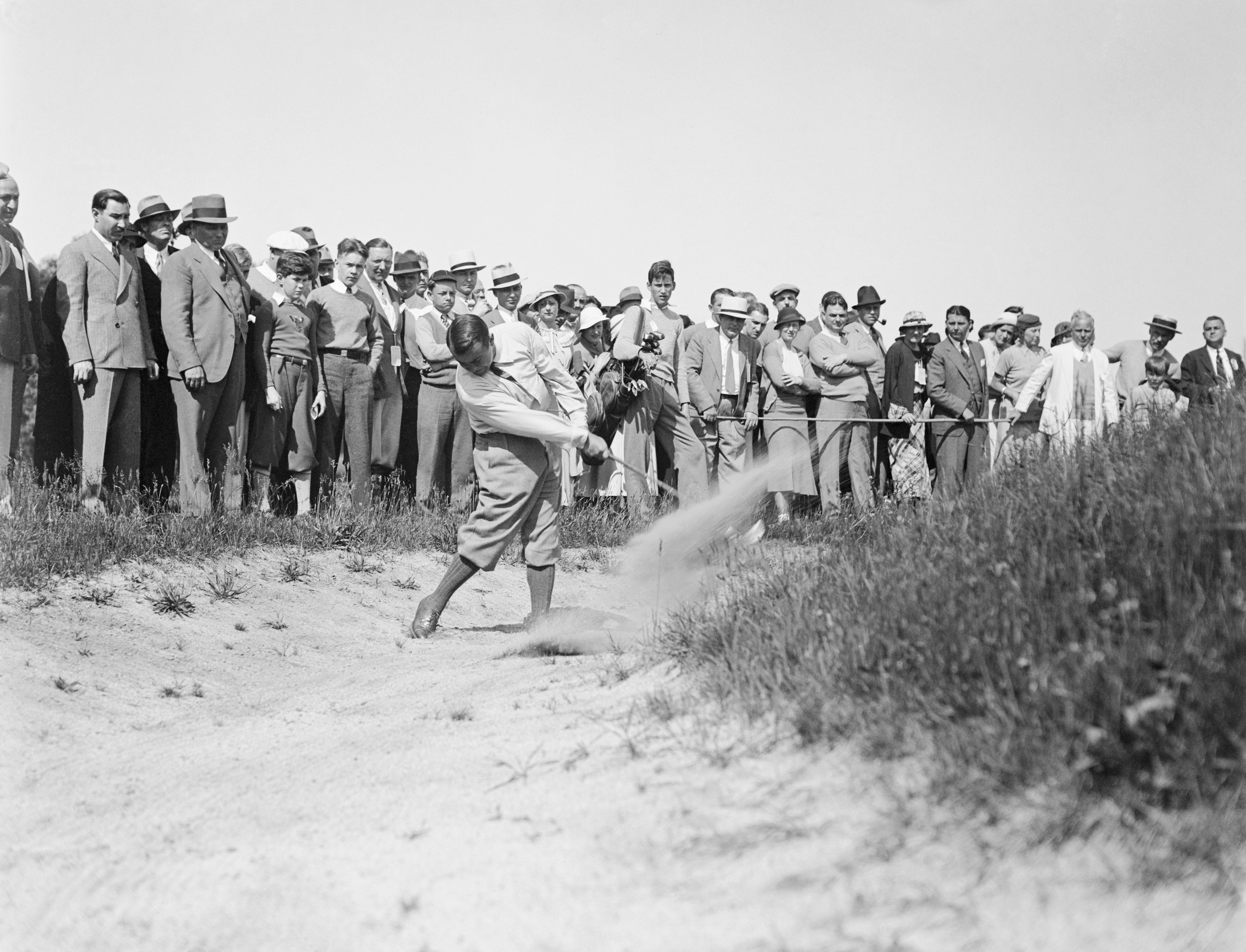
The coronavirus pandemic has hit a giant pause button on fans being able to watch golf on TV, and in some cases, even kept people off courses. But while we hunker down and hope for a speedy return to normalcy, we can also use this time as an opportunity to learn more about the game we love. Here’s our latest installment of “Did you know?”
Long before the Alien or C3i sand wedges were hawked on infomercials, promising an automatic out from the bunker, Gene Sarazen was on the case, seeking a better method of escape from such hazards.
Now to be clear, Sarazen didn’t truly invent the sand wedge. However, he essentially designed the forerunner for what we today call the sand wedge. Other such clubs were in play prior to The Squire taking things into his own hands, but some had concave faces (which at times hit the ball twice—once in front and once in back) and other designs that the USGA and R&A deemed illegal in 1931.
How Sarazen came to design his club is a well-worn tale that bears repeating. While being taught by Howard Hughes how to fly a plane, Sarazen took note of how a plane’s tail adjusted downward during takeoff, spawning an idea. Sarazen reached out to his equipment company, Wilson, and had them send him half-a-dozen niblicks (the equivalent of a 9-iron) to his home in New Port Richey, Fla. Using solder (don’t laugh, Rickie Fowler does something similar), Sarazen experimented with different amounts of mass on the sole of the clubs until he found one he felt would easily extricate the ball from sand.
 FacebookPinterest
FacebookPinterestRickie Fowler's Cobra sand wedge had solder on the back flange.
Sarazen took the club, which had a punch-mark face instead of conventional grooves, to the 1932 Open Championship, taking care to keep it under wraps for fear it would be deemed illegal before play began. Oh, that sneaky Squire.
Asked about that chicanery by Peter Kessler on an episode of Golf Talk Live on Golf Channel, Sarazen fessed up. “Oh sure, because the British would have barred it," he said. "Because in 1932 the first nine holes I was in two or three traps and I came out and down in one and I heard the gallery saying, ‘Oh, have you seen that weapon that Sarazen has in his bag?’ So everybody started talking about it, but it was too late to barr it.”
After Sarazen used the club during his win at Princes, play from the sand was never the same again.
In June 2011, the Sarazen bunker was unveiled at Princes Himalayas course. On hand for the opening was another long-time Wilson staff player, three-time major champion Padraig Harrington, who paid homage to Sarazen by executing a number of bunker shots using Sarazen’s wedge among others.
Sarazen’s design spawned a number of wedge designs from Wilson over the years, including numerous iterations of the R-20 and R-90. As for Sarazen’s wedge, it now resides at the USGA Museum in Far Hills, N.J. And unlike those infomercial wedges, it’s not for sale.

